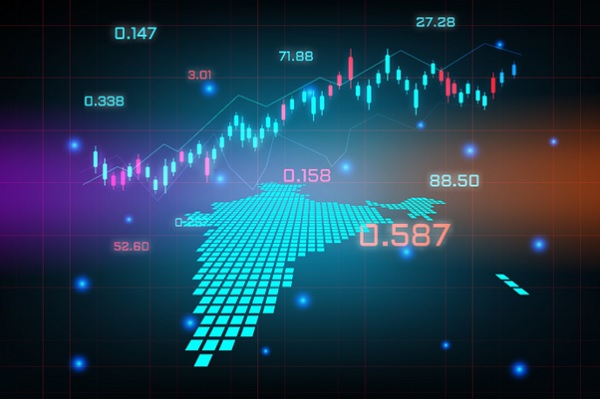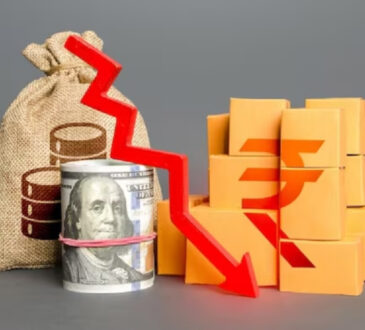
#AD
Introduction
Forex trading, a decentralized global marketplace for currency exchange, offers a unique investment opportunity in India. Known for its 24-hour accessibility and potential for high returns, forex trading attracts both seasoned investors and newcomers. However, navigating its intricacies requires a thorough understanding of market dynamics, legal frameworks, and trading strategies. Whether you’re curious about getting started or looking to fine-tune your existing skills, this guide covers all essential aspects of forex trading in India.
What is Forex Trading?
Understanding Forex Markets
Forex markets operate as a vast network where currencies are bought and sold globally, forming the backbone of international trade and investment. They are decentralized, functioning without a centralized exchange, with trades occurring over-the-counter (OTC) via a network of computers and brokers. The primary motive is to facilitate currency exchange across diverse purposes, from commerce to tourism. In this network, currencies are traded in pairs, such as USD/INR, reflecting the economic health and financial activities of the respective countries.
Forex markets stand out for their incredible liquidity, making them one of the most active trading markets globally. They are divided into three primary markets: spot, forward, and futures markets. The spot market is the largest and most popular, where trades occur at current market prices and are settled immediately. Forward and futures markets involve contracts that are settled at a later date, governed by standardized agreements.
Market participants include a wide range of entities such as central banks, commercial banks, investment firms, and individual traders, each contributing to the market’s dynamism. Their diverse motives—from hedging risks to purely speculative endeavors—ensure constant activity and fluid price movements.
Understanding these fundamental aspects of forex markets is the first steptowards engaging effectively and profitably in currency trading. It equips traders with the necessary insight into how market forces interact and influence exchange rates, allowing for informed decision-making. This foundation is essential, especially as one delves deeper into more advanced trading strategies and market analysis.

Allowed Currency Pairs
In India, forex trading is subjected to specific regulatory restrictions, particularly regarding the currency pairs you can trade. The Reserve Bank of India (RBI) limits trading to currency pairs that are based on the Indian Rupee (INR). Only a selected set of major currency pairs can be traded legally on recognized platforms.
The allowed currency pairs in India include:
1. USD/INR: The US Dollar and Indian Rupee pairing is the most traded and widely monitored due to its global economic significance.
2. EUR/INR: Involving the Euro, this pair offers exposure to the European economy, making it attractive to traders looking to diversify.
3. GBP/INR: The British Pound adds another layer of market complexity given the economic ties between India and the UK.
4. JPY/INR: With Japan being a major trading partner, this pairing is crucial for addressing the forex needs stemming from trade relations.
5. AUD/INR: The Australian Dollar pair is primarily leveraged by those involved in sectors like commodities.
These currency pairs are offered on recognized exchanges such as the National Stock Exchange (NSE) and the Bombay Stock Exchange (BSE), providing a regulated environment for trading. This limitation helps minimize potential risks associated with trading highly volatile or exotic currencies, ensuring that transactions are conducted within a stable framework. Traders can still engage in diverse strategies by analysing global economic events impacting these major currencies.
By focusing on these approved currency pairs, you can navigate the forex market within the legal and regulatory guidelines, mitigating risks while accessing the substantial opportunities that these markets offer.
Strategies for Successful Forex Trading
Technical Analysis vs. Fundamental Analysis
When it comes to developing a forex trading strategy, two primary forms of analysis are often utilized: technical analysis and fundamental analysis. Each offers distinct approaches to predicting market movements and making informed decisions.
Technical Analysis: This method focuses on studying past market data, primarily price movements and volume, to forecast future price changes. Technical analysts rely on charts, patterns, and indicators such as moving averages and MACD to identify trends and potential entry and exit points. This analysis is based on the assumption that historical patterns repeat themselves, making it popular among traders who prefer a data-driven approach.
Fundamental Analysis: Conversely, fundamental analysis evaluates economic, political, and social factors that might influence currency values. It involves examining economic reports, such as GDP, employment figures, and interest rates, alongside geopolitical events. This type of analysis is more comprehensive, as it seeks to understand the intrinsic value of currencies based on broader economic realities.
In comparing these two approaches, technical analysis is often favored for short-term trading due to its emphasis on quick data interpretation and pattern recognition. Fundamental analysis provides a macroeconomic perspective, appealing to those interested in understanding the underlying factors impacting markets over the long term.
The best strategy often combines elements of both analyses, offering a balanced view that considers both past market behaviors and current economic conditions. This dual approach allows you to navigate short-term volatility while understanding long-term trends.
Understanding the strengths and limitations of each can streamline your strategy development, helping you capitalize on market opportunities with informed precision.
Risk Management Techniques
Effective risk management is crucial to maintaining a successful and sustainable forex trading practice. Here are key techniques to help you manage and mitigate risks:
1. Position Sizing: Determine the size of each trade based on your total available capital and risk tolerance. A common approach is to limit risk to 1-2% of your account balance per trade. This method prevents significant losses from impacting your overall portfolio.
2. Stop-Loss Orders: Implement stop-loss orders to automatically close trades once they hit a predetermined loss threshold. This tool helps protect your capital by restricting potential losses and providing peace of mind.
3. Take-Profit Orders: Similar to stop-loss orders, take-profit orders automatically execute when a trade reaches a specific profit level, ensuring gains are secured. This strategy aids in maintaining disciplined profit-taking without emotional interference.
4. Diversification: Spread your investments across various currency pairs or other asset classes to minimize risks. Diversification reduces the impact of any single negative event on your overall portfolio.
5. Continuous Monitoring and Adjustment: Regularly review your trading plan and performance. Adapt your strategies as market conditions evolve. Staying informed about market trends and economic events allows for timely adjustments to your risk management strategies, safeguarding your investments against unforeseen volatility.
By integrating these techniques into your trading regimen, you can create a robust safety net that minimizes losses and maximizes profits, ultimately leading to a more resilient and efficacious trading experience.
Tools and Resources for Forex Traders
Educational Materials and Courses
Expanding your knowledge through educational materials and courses is a vital step in mastering forex trading. Here’s a breakdown of what to look for:
1. Online Courses: These offer structured learning pathways, from beginner to advanced levels. High-quality courses typically cover market fundamentals, technical and fundamental analysis, and trading psychology. Look for courses with interactive content and access to expert insights.
2. Books and eBooks: A wealth of information can be found in forex trading books. They can provide in-depth coverage on specific topics like candlestick patterns or risk management. Choose titles recommended by experienced traders for their comprehensive approach and practical advice.
3. Video Tutorials and Webinars: Visual learning through videos can be highly effective. Many brokers and trading platforms offer free tutorials that teach platform navigation and analysis techniques. Webinars often feature industry experts discussing current market trends and strategies.
4. Trading Forums and Communities: Engaging with fellow traders on forums like Forex Factory or Reddit can enhance learning through shared experiences. Such communities serve as excellent platforms for exchanging strategies, tips, and market outlooks.
5. Demo Accounts: Although not traditional educational materials, demo accounts provide a practical learning environment where you can test strategies, analyze market movements, and build confidence without financial risk. This hands-on experience is invaluable as you transition to live trading.
Investing your time in these resources is crucial to building a solid foundation in forex trading. By continuously educating yourself, you can develop the skills necessary to adapt to market changes and make informed decisions, ultimately leading to more successful trading outcomes.
Trading Software and Apps
In today’s fast-paced forex market, having the right trading software and apps can make all the difference in executing trades efficiently and effectively. Here’s what you should consider:
1. MetaTrader 4 and 5 (MT4/MT5): These platforms are industry standards due to their comprehensive features like real-time charts, technical indicators, and automated trading capabilities. MT4 is often favored for its simplicity and robustness, while MT5 provides additional tools for more advanced trading needs.
2. cTrader: Known for its intuitive interface, cTrader is another popular choice among traders. It offers one-click trading, detailed charting, and a wide range of analytical instruments, making it suitable for both beginners and experienced traders.
3. Mobile Trading Apps: Most modern platforms offer mobile apps, enabling you to trade on the go. These apps provide essential features like price alerts, news feeds, and account monitoring, ensuring you stay connected to the markets anytime, anywhere. Look for apps with strong security measures and user-friendly navigation.
4. Trading View: As a comprehensive tool for charting andsocial networking, Trading View provides traders with advanced charting capabilities combined with community insights. Its cloud-based platform allows you to share analysis and ideas with other traders, fostering a collaborative learning environment.
5. Broker-Specific Platforms: Many brokers offer proprietary platforms tailored to their clients’ needs, often integrating special features like tailored news updates and exclusive analytical tools. Evaluating these options can provide unique benefits aligned with your trading style.
Using these tools effectively can significantly enhance your trading experience by providing the necessary resources to analyze the market, manage trades, and keep abreast of global financial events. Selecting the right software and apps that suit your trading needs ensures you stay competitive and responsive in the ever-evolving forex landscape.
Market Analysis Tools
Market analysis tools are essential for any trader looking to make informed decisions and maximize their profitability in forex trading. Here’s a look at some of the most effective tools you can incorporate into your strategy:
1. Economic Calendars: These calendars provide detailed schedules of upcoming economic events and announcements, such as central bank meetings or employment reports. Staying informed about these events can help you anticipate and react to potential market shifts.
2. Technical Indicators: Incorporate various indicators like Moving Averages, Bollinger Bands, and the Relative Strength Index (RSI) to identify trends and potential entry or exit points. These tools analyze price data and help you develop strategies based on historical price movements.
3. Sentiment Analysis Tools: These tools gauge market sentiment by analyzing data points like trader positions or social media activity. Understanding whether the market feels bullish or bearish can provide an added layer of insight into potential price movements.
4. Charting Software: High-quality charting tools allow for in-depth analysis of markettrends and price occurrences. Platforms like Trading View or MetaTrader offer customizable chart layouts, enabling you to plot indicators, draw trend lines, and monitor historical price data in formats that best suit your analysis needs.
5. News Aggregators: Staying updated with global financial news is crucial. News aggregators compile stories from multiple sources, ensuring you receive the latest market-moving headlines. Platforms such as Bloomberg or Reuters provide real-time news tailored to forex traders.
Integrating these market analysis tools into your trading routine allows you to enhance your market comprehension and strategic planning. By effectively combining technical, fundamental, and sentiment analyses, you position yourself to make well-rounded, informed trading decisions that consider both short-term fluctuations and long-term trends.
Tips for Beginners in Forex Trading
Practice with a Demo Account
Practicing with a demo account is one of the most effective ways to prepare for real forex trading. It allows you to explore the market’s dynamics without financial risk, offering a safe space to refine your strategies and build confidence. Here are key benefits and tips for maximizing this resource:
1. Risk-Free Learning: With virtual funds at your disposal, you can experiment with different trading techniques and strategies without fear of losing actual money. This opportunity is invaluable for beginners to understand market mechanics.
2. Platform Familiarization: A demo account lets you navigate trading platforms like MetaTrader or cTrader without pressure. You can learn to set up charts, apply technical indicators, and place orders seamlessly.
3. Strategy Development: Test various trading strategies in real-time market conditions. This practice helps identify which approaches work best in different scenarios, enabling you to adjust and refine your tactics.
4. Understanding Volatility: Get accustomed to market fluctuations and learn to manage volatility effectively. Experience with dmo trading helps you recognize patterns and gain insights into how different factors affect currency values.
5. Confidence Building: Consistent practice with a demo account boosts your trading confidence. By experiencing simulated trades that mimic real market environments, you prepare yourself emotionally and strategically for live trading.
Using a demo account strategically bridges the gap between theoretical knowledge and practical application. It’s an essential step for anyone looking to ease into live trading with a solid foundation and clear insights into market behavior. While it doesn’t replicate the psychological pressures of real money trading, it remains an indispensable tool in your preparatory arsenal.
Understanding Leverage and Margin
Understanding leverage and margin is crucial for forex traders as these concepts significantly impact your trading potential and risk exposure. Let’s delve into what they mean and how you can use them judiciously:
1. Leverage Explained: Leverage enables you to control a larger position in the market with a relatively small amount of invested capital. It is essentially borrowed money provided by brokers, amplifying both potential gains and losses. For example, a leverage ratio of 50:1 means that for every $1 of your capital, you can trade up to $50 in the market.
2. Margin Requirements: Margin is the deposit needed to open and maintain a leveraged position. It’s often expressed as a percentage of the total trade size. For example, a 2% margin requirement means you need to deposit 2% of the trade’s value to initiate the position.
3. Risk Considerations: While leverage can boost profits, it equally risks amplifying losses. Novice traders sometimes over-leverage, resulting in significant financial setbacks. It’s crucial to assess your risk tolerance and use leverage conservatively.
4. Margin Calls: A margin call occurs when your account equity falls below the required margin level, prompting your broker to ask for additional funds or close positions to mitigate potential losses. Staying on top of your margin usage can help avoid such scenarios.
5. Effective Usage Strategies: Start with small leverage to better understand its effects on your trading. Additionally, use stop-loss orders to limit potential losses and protect your invested capital.
Mastering leverage and margin is about striking a balance between ambition and prudence. By managing these tools carefully, you can enhance your trading power while safeguarding against excessive risks.
Building a Diversified Portfolio
Building a diversified portfolio is a vital strategy in forex trading to manage risk and enhance potential returns. Diversification involves spreading investments across different currency pairs to mitigate the impact of volatility in any single asset. Here’s how to craft a well-rounded portfolio:
1. Understanding Correlation: Choose currency pairs that don’t move in tandem. For instance, diversifying with pairs that have low or negative correlation can offer balance, as when one pair trends downward, another may trend upward, stabilizing overall returns.
2. Mix of Major and Minor Pairs: Incorporate a combination of major pairs like EUR/USD and USD/JPY with minor pairs such as NZD/JPY or EUR/GBP. This mix ensures exposure to big economies and less traded currencies, offering varied opportunities.
3. Incorporating Cross-Currencies: Don’t overlook cross-currency pairs—those that don’t include the USD—like EUR/JPY or GBP/NZD. These pairs provide diversification away from the dollar-centric trades and react differently to economic events.
4. Geopolitical and Economic Factors: Consider geopolitical stability and economic health when choosing which currencies to include in your portfolio. Analyze the economic outlook of different regions to anticipate how these factors might influence currency movements.
5. Regular Portfolio Review: Markets change; thus, your portfolio should adapt accordingly. Regularly review and rebalance your holdings to maintain alignment with your risk tolerance and market conditions. This process helps capitalize on shifting dynamics and opportunities.
By diversifying your forex portfolio, you reduce exposure to single-market risks, enhancing the potential for steady returns. This approach not only cushions against market volatility but also provides broader exposure to global economic fluctuations.



